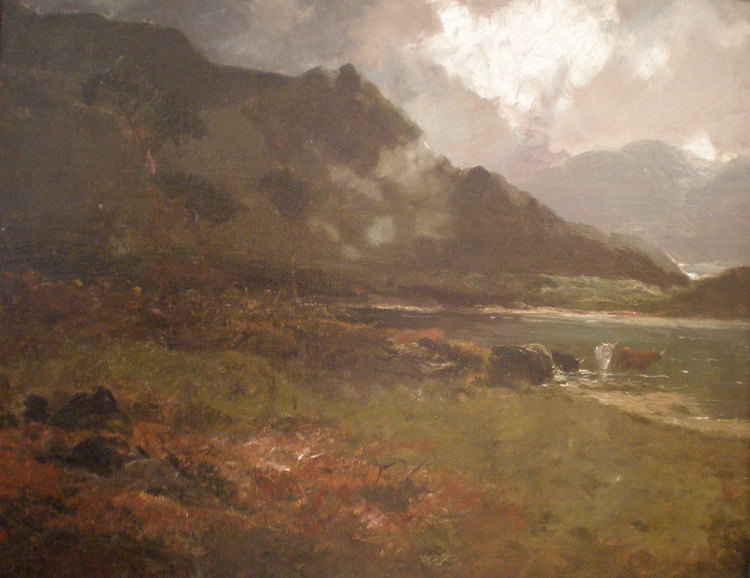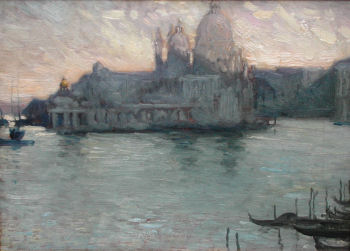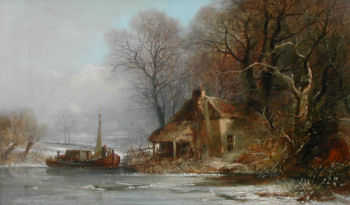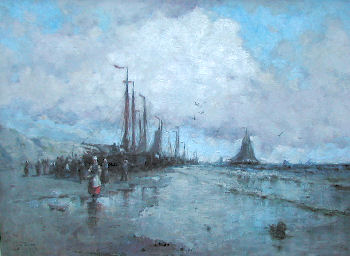Oil on Board, 40x32cm.
James Docharty A.R.S.A. 1829-1878
Docharty was born in the calico-printing district of the Vale of Leven, at Bonhill, near Bumbarton, where his father was employed in one of the numerous works for which that locality divides its fame with football playing.
He served his apprenticeship as a pattern designer, which profession he persued in Glasgow until about 1861, when he took seriously to the profession of a landscape-painter, for which he always had a strong predilection.
His first studies of any consequence were made at the village of Ardenadarn, a watering place on the Holy Loch on the Clyde, after which the establishment of the Glasgow Institute of the Fine Arts afforded him an opportunity of putting his works before the public.
The quality of his landscapes, in which the character of Scottish landscape was simply and truthfully delineated, rapidly brought him into notice, and led to his election as an Associate of the Scottish Academy in 1877. He was a regular exhibitor at the local exhibitions, the Scottish Academy, and during the last few years of his life, at the Royal Academy, where his works were favourably noticed.
In the spring on 1866, on account of his heath begining to fail, he left for a trip to Egypt, in the course of which he made some sketches of Nile scenery which he never wrought out; and afterwards spent some months at the Isle of Wight, in spite of the pulmonary complaint from which he had been suffering terminated fatally in Glasgow in 1878.






